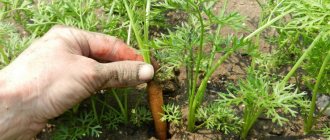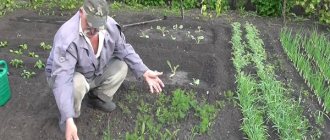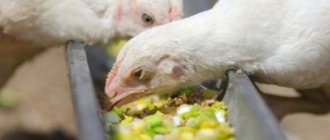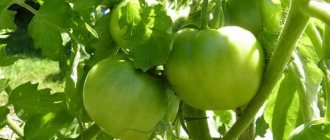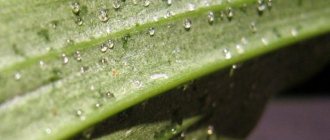Beets are a fairly common vegetable, which at first glance is not difficult to grow. However, in reality, this garden crop can give gardeners unpleasant surprises, which is reflected in a decrease in yield or simply a lack of plant growth. Let's take a closer look at why beets don't grow and how to solve this problem and get an excellent harvest.
It must be said that problems in beet growth can be caused by various reasons. This may be the wrong choice of beds for planting this crop, lack of quality care, or damage to the plantings by various diseases and insect pests. Let's take a closer look at the reasons why beets do not grow on the site.
Why beets grow poorly
To get a good beet harvest, you need to follow the rules of planting, care and feeding. When planting, choose well-lit places on the site, and make the sides of the beds high enough. But it happens that even when these conditions are met, the seedlings grow poorly, the plants look stunted, and the fruits are small and tasteless.
How to determine which microelements are missing
A lack of microelements in the soil can significantly affect the quality and quantity of the beet harvest.
It is not difficult to determine what substances a vegetable lacks for normal formation. To do this, pay attention to the condition of the tops and roots:
- yellow spots on the foliage indicate potassium deficiency;
- too red tops indicate a lack of sodium;
- weak, underdeveloped leaves are a sign of nitrogen deficiency;
- Rotting of the beet core is a clear sign that boron should be added to the soil.
What to do and how to eliminate the causes if the root crop does not grow?
When faced with such a problem, you need to act comprehensively. Let's take a step-by-step look at the main measures to improve growth.
Organizing proper care
Proper care consists of providing appropriate watering, fertilizing and growing conditions for red root vegetables in the garden.
- Beets are one of those root vegetables that love water. Therefore, frequent watering is the key to a good harvest and rapid plant growth. Watering should be done 2 to 5 times a week, depending on the looseness of the soil and the lighting of the area. If the summer is too hot, frequent watering is organized even in cloudy weather. You can water the plants from above by sprinkling in the morning or evening. But if the leaves are exposed to direct sunlight, it is better to pour water into the grooves between the beds.
- Providing optimal growing conditions will enable root crops to develop quickly. The air temperature may be low, but the soil should be warm. As for humidity, there are no special requirements. But lighting is of great importance: the more light, the better the beets will grow. Therefore, it is recommended to thin out the plants more often and not plant the crop in the shade.
- The organization of feeding is also important. Periodically, the crop should be fed with mineral fertilizers, depending on the variety and the specific composition of the fertilizer. But the very first feeding plays a decisive role. As soon as the seedlings have 7-8 permanent leaves, dilute about 50 g of regular non-iodized table salt in a bucket of warm water. Water the seedlings well with this solution. This technique will significantly increase the plant’s resistance to diseases and pests, enhance growth in the future and increase the sugar content and juiciness of the fruit.
How to feed beets
To fertilize beet plantings, both organic and chemical fertilizers are used.
Organic ones include:
- infusions of plants with the addition of yeast;
- mullein;
- bird droppings.
The most popular chemical drugs are:
- potassium sulfate;
- superphosphate;
- ammonium nitrate.
Purchased ready-made minerals
There are dozens of types of ready-made mineral fertilizers for fertilizing root crops; they can be complex or single-component. Let's look at the most popular and effective preparations among experienced gardeners.
"Bordeaux"
A complex product that not only supplies beets with all the substances necessary for full growth, but also protects them from dangerous diseases of cultivated plants. Bordeaux contains trace elements: potassium - 18%, phosphorus - 16%, nitrogen - 13%.
This fertilizer is used both to saturate the soil with useful substances before planting and for the first fertilizing. It is used both in dry form and as a solution. “Bordeaux” increases productivity, improves the appearance of root crops and taste. No other fertilizers are required when using this product.
"NPK Complex"
For greater effectiveness, this drug is recommended to be used in combination with nitroammophoska. When used, the components are diluted in equal parts.
The complex is most suitable for fertilizing the soil before planting beets. First, they dig up the ridge, then spread the fertilizer evenly over its entire surface and carefully level it with a rake. The final stage of processing will be watering. It is recommended to use fertilizer at least 5 days before planting the seeds.
Ammonium nitrate
The drug saturates the soil with nitrogen and is used for the first feeding of the plant when mass shoots appear. The fertilizer is carefully diluted in 10 liters of water and applied not at the root, but in the furrows between the plants.
Folk remedies
Natural fertilizers are considered no less effective than ready-made commercial preparations. Such products are applied to the soil in autumn, spring and throughout the summer. To saturate the soil with useful substances, mullein, compost and humus are added to it before planting and after harvesting.
Important! It is not recommended to apply fresh manure to the ridges, as it oversaturates the soil and can cause underdevelopment and deformation of the fruits.
Chicken droppings and mullein
An infusion of chicken droppings or mullein will saturate the soil with nitrogen. Ideal for the first feeding of root crops. It is not recommended to apply it directly to the root. It is best to fill the furrows with it between plantings.
When preparing the solution, use the following concentrations: for mullein - 1:8, for chicken manure - 1:12. Most of it is water. Do not exceed the specified standards, as you can burn the roots of the plant.
Ash
Suitable for second feeding. Used both dry and diluted in water. For the norm, 1 glass per 1 m2 is enough.
Infusion of herbs and weeds
Chop the herbs and add warm water. Let it steep in warm water for several days until the infusion turns light brown. Beets should be fertilized with it every 10 days.
Yeast
Yeast supplement is prepared as follows: 25 g of the product are diluted in 10 liters of water, infused for at least 2 hours. Plants can be watered with this solution once every 10 days.
Salt
Watering with salt water is carried out both to improve the taste of beets (they become sweeter) and to saturate the fruit with necessary microelements.
What BEET HIGHLY DOES NOT LIKE. How to fertilize? Spots on leaves.
Why beets don't grow or grow poorly
Beets will not grow well if:
- the crop was sown too late, without observing the optimal sowing time;
- sowing was carried out in dry soil, without additional moisture or rain preceding sowing;
- no natural or artificial watering was carried out during the period from germination until the appearance of 3–4 true leaves on the plants;
- the soil is too acidic and heavy;
- the predecessor crop was the same beet or plants belonging to the families Chenopodiaceae and cruciferous plants;
- plant growers neglect protection and prevention measures against diseases and pests.
Violation of conditions
Beets grow a large mass of roots and leaves, so they consume a lot of water. The bulk of the crop grows in July and August, when water reserves in the soil decrease and high temperatures usually increase water deficiency. The distribution and amount of precipitation during the growing season are of great importance. Spring drought is also dangerous and prevents the emergence of seedlings. Summer droughts, in turn, reduce the increase in the mass of root crops and their quality. Irrigation of beet plantations is an important factor in stabilizing yields.
Read more about how and when to plant beets before winter.
The crop requires high light intensity during the growing season. Rainy summers are accompanied by a deterioration in light intensity, so plants grow worse. Moisture helps to increase the mass of roots and leaves, but the sugar content in root vegetables decreases. A high yield of roots with high nutritional value is obtained in years with optimal rainfall in June, July and August, but only if warm and sunny weather returns after the rains.
Wrong site selection
Soils intended for beets should not be clayey or dense; good hygroscopicity is important. If the arable layer does not have a uniform and crumbly structure, then this is an obstacle to root growth. It is also bad if the humidity in the open ground is too high, and this happens in swampy areas or is caused by improper soil cultivation.
Did you know? Scientific research has shown that the high levels of unique antioxidants and anti-inflammatory agents found in beets may help reduce the risk of many types of cancer.
Violation of crop rotation rules
Crop rotation is the sequence of growing crops in a certain bed or field. Properly organized crop rotation is the basis for crop productivity, ensures increased soil fertility and its biological activity, limits the occurrence of diseases, pests and weeds, and also ensures the full use of nutrients from the soil. Crop rotation also aims to protect the soil from erosion and reduce the leaching of nutrients, especially nitrogen, into groundwater, so it is necessary to keep the land covered with rich vegetation throughout the growing season.
Crop rotation uses at least a four-year rotation cycle. This means that the same plant species, and even another species from the same botanical family, should not appear in the same field before 4 years.
- The following are recommended as precursors for beets:
- grain crops;
- corn;
- clover and alfalfa;
- onions, leeks;
- cucumber, tomato and lettuce;
- peas, vetch, beans, beans;
- phacelia;
- mustard, radish;
- spinach.
Important! Vegetable growers need to remember that good predecessors of sugar and table beets are legumes and grains, pumpkin plants and onions of any kind.
- The following are not suitable as beet predecessors:
- sugar and table beets;
- cabbage, cauliflower, broccoli;
- rapeseed, turnip;
- radish, radish;
- rhubarb and carrots;
- parsley;
- potato.
Diseases and pests
The main diseases of beets are:
- Beet mosaic - symptoms appear within a few days of infection with changes in the color of the leaf ribs and the appearance of irregular green spots. Infected tissues do not develop normally, and, alternating with healthy tissue, the leaves acquire a mosaic appearance. This viral infection is transmitted by aphids.
- Rhizoctonia - the causative agent is the imperfect fungus Rhizoctonia solani. The disease occurs at all stages of the growing season. If plants are infected at an early age, the harvest is completely lost. Adult diseased plants survive but grow poorly. In some cases, the edges of the leaf turn yellow and necrosis appears. The leaves of diseased vegetables are small, upright, and limp. The roots are cone-shaped and form a “beard” of lateral roots. The inside of the root is destroyed, black necrotic tissue appears.
- Bacteriosis is a fire blight caused by the bacteria Bacillus mycoides Flugge and Bacillus mesentericus var vulgatus Flugge. This disease appears at the growth stage of 4 to 6 true leaves. Symptoms are brownish-black spots surrounded by a dark halo. In some cases, the affected tissues dry out and crumble, and the leaf blade becomes full of holes. The bacterium is transmitted through infected seeds and also overwinters on remaining plant debris in the soil after harvesting.
- Mycoses - caused by Phytium fungi. The disease is carried by the wind and is dangerous until the plants form their first two pairs of true leaves. The disease appears as small watery spots on the stems. The infected area becomes thin and then turns black and rots. Plants fall to the ground and soon die, leaving gaps in the crop.
- Downy mildew is a fungal disease; outbreaks of this disease occur in rainy years and cause crop losses of up to 15% of the total. Affected leaves remain small, deformed, brittle and dry out. In autumn, the disease can be observed on the leaves in the center of the rosette. Discolored spots appear on their upper parts, accompanied by a purple edging. Fungal spores are transmitted through infected seed material.
- Zone leaf spot or phomosis is caused by the fungus Phoma betae AB Frank. On diseased vegetables, rosette leaves wither and become covered with large brown spots; on the roots, the disease causes rotting. The fungus remains viable in plant debris, on the soil surface and in infected seeds.
- Beetroot rust is caused by the fungus Uromyces betae. The disease is quite common and appears at the end of the growing season. Yellow spots appear on all leaves. Later, orange bumps appear on the undersides of the leaves. Starting in August, the disease enters the next phase, manifested by the appearance of brown spots. By autumn, the brown spots change color to black, after which the diseased leaves become dry and brittle.
- Cercosporidosis is caused by the fungus Cercospora beticola. This is the most common beet disease. The fungus appears on crops at the end of June; yellow, round spots appear on the leaves. The disease progresses and the spots become gray with a brownish-red ring around the edge. The spots are initially single, and then increase in size, unite and cover large areas of the leaf blade. The affected tissues die and crumble, and the leaves take on a holey appearance.
The main pests of sugar beets are:
- Nematodes (Heterodera schachtii) - reproduce with a frequency of two generations per year, prefer plants of the goosefoot family, as they provide them with optimal conditions for development. The attack on beets usually occurs at the end of June. Root crops infected with a nematode grow poorly, their leaves turn yellow or die, and the underground part is small and forms numerous secondary roots.
- Beet bug (Poecyloscytus cognatus) - develops one generation per year and lays eggs in various areas of the stems. This is a multiphasic insect species that is the main pest of sugar beets. After an attack by bedbugs, vegetable tissues dry quickly, and phytopathogenic organisms subsequently develop in wounds caused by insects.
- The black beet aphid (Aphis fabae) is a migratory insect species that develops several generations per year, each of which lays eggs. The insect attacks more than 200 plant species, including sugar beets. Insects colonize the leaves and feed on their sap, causing the plant to develop weakly and slowly. In addition, aphids serve as carriers of many viruses.
- Beet root aphid (Pemphigus fuscicornis) - insects produce about eight generations per year, females or eggs overwinter in the soil at a depth of 20 to 100 cm, preferring dry and warm places. Root aphids are dangerous to many plants belonging to the Chenopodiaceae (chenopodiaceae) family. Adults and larvae feed on root sap. After root aphids infest the vegetables, the leaves dry out and the roots rot. In addition, crops become weakened and can be easily attacked by phytopathogenic agents.
- Beet weevil (Bothynoderes punctiventris) - develops one generation per year and hides in the soil at a depth of 20 to 25 cm. This is one of the most dangerous pests of sugar beets. Larvae and adults attack young beets in the cotyledon phase, which they eat to the ground. One weevil can destroy 10-12 plants per day. After the formation of the first pairs of true leaves, adult weevils can no longer completely destroy the crop, but gnaw out cavities in the roots, as a result of which the affected plants wither and the root forms many additional small roots. Roots affected by the weevil are less developed and produce poor quality crops.
- Beet flea beetle (Chaetocnema spp) - this species produces 2-3 generations per year, adult insects overwinter in the surface layer of soil or under plant debris. Beet flea beetle infestation causes extensive damage to fodder and sugar beets. Plants are destroyed in the cotyledon phase or until there are two pairs of true leaves. Damaged tissues die, vegetable growth slows down, and photosynthesis decreases. The flea beetle especially damages beet crops in dry years.
- Beet leaf miner (Scrobipalpa ocellatella) - This insect reproduces at a frequency of 3-4 generations per year. Young insects develop as larvae on beet residues left after harvesting or on stored roots. The larvae feed on young leaves and make tunnels in the petioles or rhizomes. The internal passages are covered with the remains of insect feces. Infected plants lose leaves, beets grow small, and the total yield from infected plantations decreases several times.
- Beet leaf miner (Pegomyia hyoscyami) - develops two generations per year and lays larvae in the surface layer of soil. Adult insects are not dangerous to crops, but the larvae penetrate into the leaves between the epidermis, top and bottom layers, where they consume epithelial cells. The pest is very dangerous when the plant has fewer than eight leaves. Diseased leaves are full of excrement and the beet's ability to photosynthesize is reduced.
Complementary feeding scheme
Fertilizers for beets are used in several stages per season. The maximum break between fertilizing is 15 days, the last application is possible 20 days before harvest.
First feeding
Before applying fertilizer, thin out the plantings and make furrows between them.
The following solutions are used:
- ammonium nitrate—30 g per 10 liters of water;
- mullein - 1 kg per 10 liters of water;
- bird droppings - 1 kg per 15 liters of water.
After application, loosen the soil between the rows.
Second feeding
The second application of fertilizer to the soil during the season occurs during the period when fruit formation begins. Only required if there is a nitrogen deficiency. To do this, prepare the following solution: 40 g of potassium sulfur and superphosphate are carefully diluted in 10 liters of water. The solution consumption is 10 linear meters.
Third feeding
It is recommended to do 20-30 days before harvest. This helps to fill the root crops and improve their quality.
In this case, the dry method is used:
- potassium nitrate: 50 g per 1 m2;
- magnesium sulfate or potassium magnesium: 20 g per 1 m2.
If there is a lack of boron in the soil, a solution of boric acid is used in the proportions of 2.5 g of powder per 10 liters of water.
Differences between root and foliar feeding
There are 2 main methods for feeding beets:
- Root (or radical) - in this case, make a solution of nutritious fertilizers and water the plants or simply apply dry fertilizers to the soil. Through the roots, minerals penetrate into all parts of the plant and supply it with the necessary elements.
- Foliar - the leaves of the plant are sprayed with a nutrient solution, which penetrates the cells of the root crop and promotes its further development. In some cases, with a sufficient volume of fertilizer, the solution can reach the beet root.
The difference between these two fertilizers is that:
- The root provides nutrition to the root crop, determines the composition of the future harvest and promotes the development of the plant throughout the growing season. It is often used before sowing beets.
- Foliar helps to quickly replenish the deficiency of certain nutrients and helps fight pests. The main difference between foliar feeding and root feeding is that it has almost no effect on the yield, since in most cases it does not penetrate to the roots of the plant. Therefore, it is recommended to use it in the later stages of vegetable development.
The feeding method should be chosen depending on the existing problem and the stage of root growth.
Instructions for feeding beets
Beets respond positively to fertilization. The main thing is not to oversaturate the soil and burn the roots. It is recommended to strictly follow the proportions when preparing solutions.
Important! You cannot apply drugs directly to the root; it is better to make shallow furrows between the rows before starting watering.
Whenever feeding, follow the following rules:
- the first is carried out when 2 full leaves appear;
- the second - after the tops close;
- the third - when the root crop appears above the ground;
- The fourth feeding is carried out in case of emergency, 15 days after the third.
Problem with selecting a site for beet beds
Table beets love well-lit, well-warmed areas with sufficient drainage so that the root system of the plant does not become waterlogged and does not rot.
If the bed is laid out in the shade or in a low area where moisture accumulates, you cannot expect a good result. All the strength of the plant can go into the tops, and the roots will never form. In order for the beets to feel better, they make high beds in which the plant would not experience a deficiency of either oxygen or sunlight. If the plot is small, this garden dweller can be allocated a place between nightshade crops such as eggplants and peppers. Beets feel good next to onions and garlic, plantings of cucumbers, squash and zucchini, in the inter-rows of early peas and green beans.
If in the previous season radishes or radishes, chard or any cabbage were grown in the garden bed, then the reason why beets do not grow in the garden should be sought in violation of the rules of crop rotation.
Poor quality, low yield of root crops and reddening of foliage can be caused by excessive soil acidity. If this is really the case, then dolomite flour is added to the planting site of the garden crop, which solves the problem. However, you shouldn't overdo it either. Excessive amounts of lime can cause another problem - scab, which also does not have the best effect on the quality of beets.
The nuances of fertilizing in the greenhouse and on the open ground
Growing beets in a greenhouse and in open ground is different, so care will be different. The main difference is that fertilizing in the greenhouse is carried out less frequently, and it is necessary to maintain normal humidity. Since the soil in a greenhouse dries out quickly and retains nutrients longer than in an open place.
Root and foliar feeding
Root fertilizing is used less frequently than foliar fertilizing, since the second type of fertilization is considered more effective.
For root feeding, phosphorus and potassium fertilizers, solutions of salt and boric acid are used. The interval between them is at least 15 days.
Foliar feeding has the following advantages:
- can be done at any time;
- overdose is excluded;
- minerals are absorbed by the vegetable faster.
Is it necessary to stimulate growth with fertilizing?
Like any plant, beets need nutrients. Especially if the root crop shows signs of deficiency of any nutrients, which is manifested by slow growth, drying out and yellowing of the leaves.
At the same time, the amount of fertilizer applied should not exceed the permissible norm, since the latter can reduce the shelf life of the plant, worsening its taste and making it poisonous.
Therefore, concentrated fertilizers are used only in cases where there is no danger of overdose. For example, natural folk remedies are safer, unlike mineral fertilizers.
Overuse of nitrogen fertilizers is fraught with negative consequences, including food poisoning in people and livestock.
Advice from experienced gardeners
To grow tasty beets and reap a rich harvest, listen to the advice of experienced gardeners. When growing this root vegetable they recommend:
- do not neglect the application of fertilizers in open ground;
- apply preparations only after watering;
- immediately after planting, apply fertilizers containing nitrogen;
- carefully monitor the condition of the tops and, at the slightest change in their appearance, feed with appropriate compounds.
Poor quality seed material
Seeds of garden crops are purchased from trusted producers to be sure of the quality of the seed. Gardeners recommend soaking the seeds in water for 1 hour before sowing.
Only use the material that sinks to the bottom of the container. Seeds that remain on the surface are usually empty or with an underdeveloped core. Such material is discarded.
The manufacturer usually carries out antiseptic seed treatment. To improve seedlings and increase productivity, the material is exposed to growth stimulants. These manipulations can be done at home.
More on the topic: What care does Cylinder beetroot require?
Potassium permanganate, hydrogen peroxide, and boric acid are used as an antiseptic. These substances not only disinfect the seeds, but also stimulate the development of the cotyledon. As a stimulant, you can choose the drug "Epin", 10 ml/l.
Incorrect landing
A small, coarse root crop often grows due to improper planting of beet seedlings.
Planting plants in shallow holes, as well as bending the root, leads to deformation of the latter, which is why the root crop does not develop properly.
To prevent this from happening, the seedlings need to be placed quite spaciously on the garden bed at a distance of 8-10 centimeters and placed in spacious holes, carefully straightening the roots.


